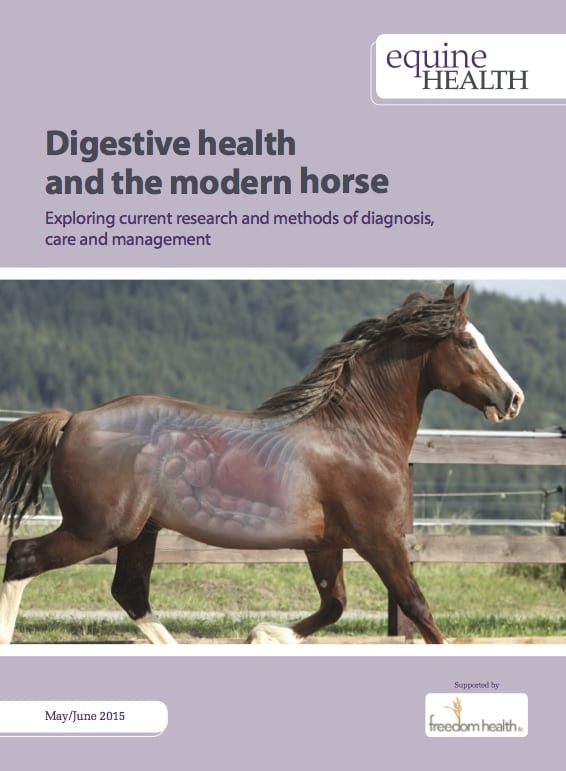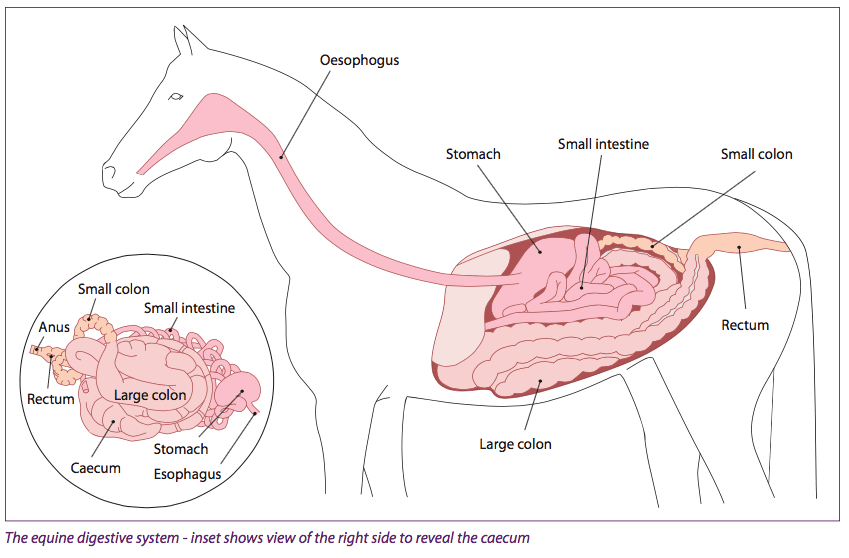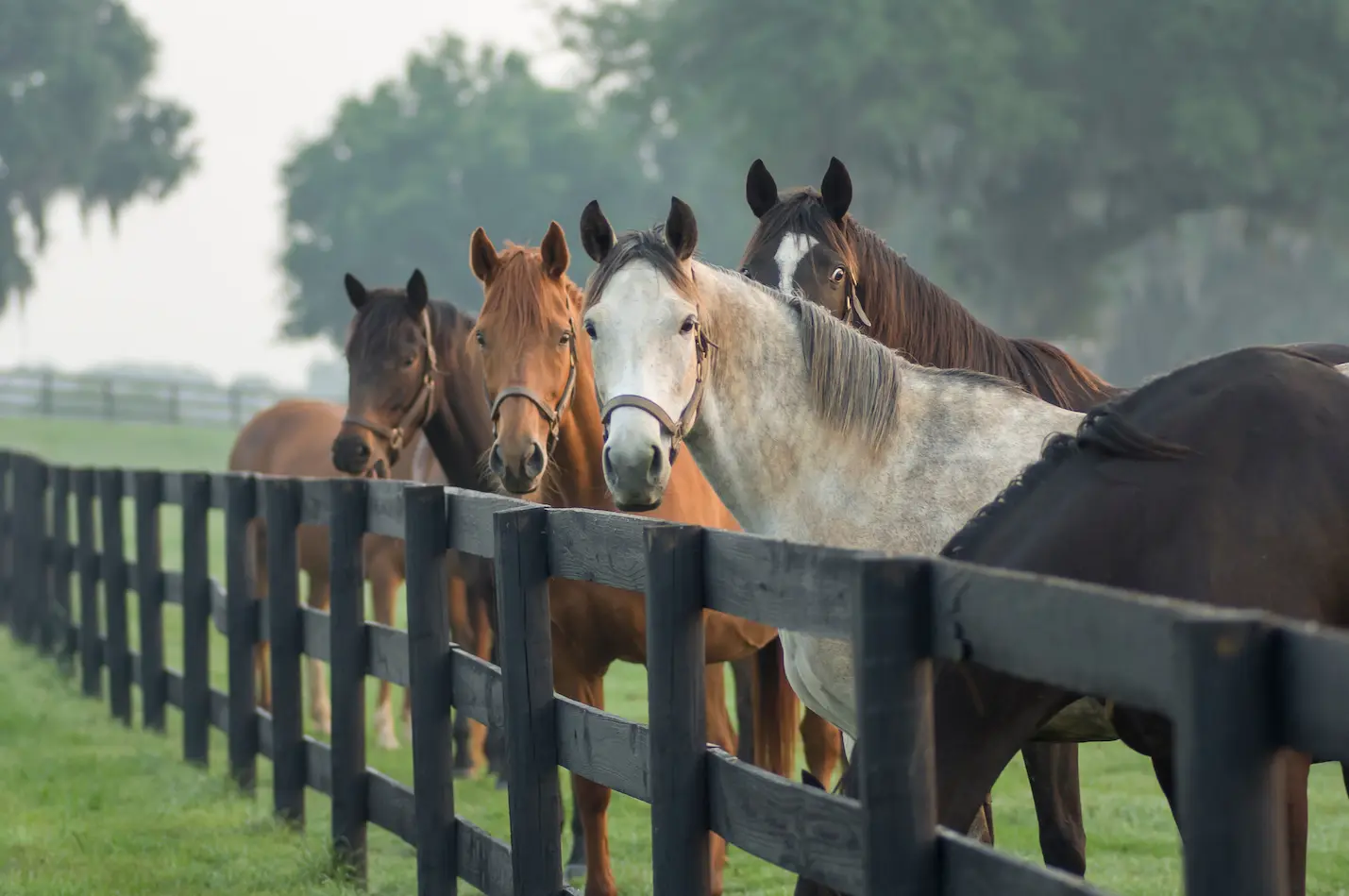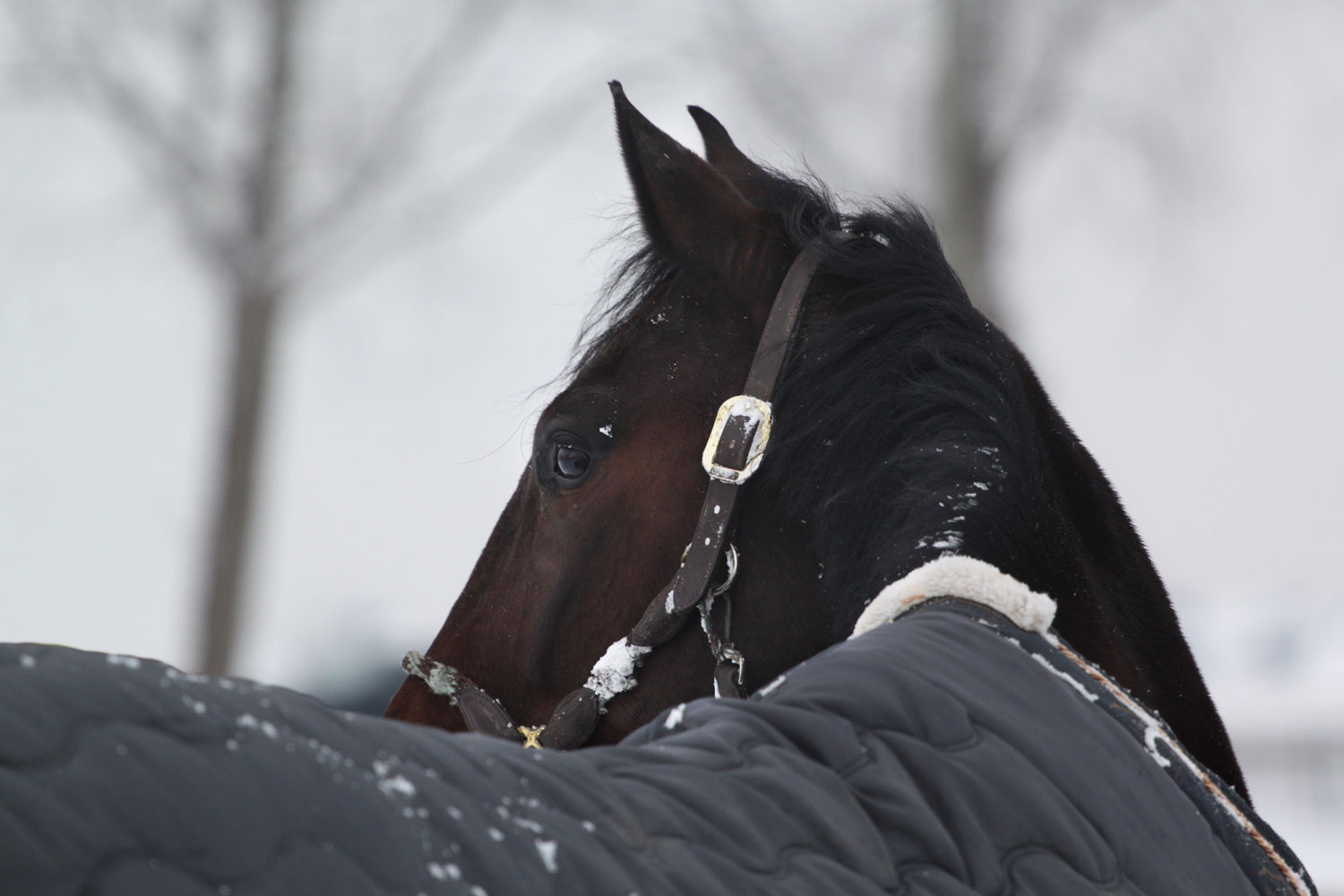 By Dr. Helen Warren.
By Dr. Helen Warren.
The digestive tract of the horse has evolved to digest dietary fibre. It is well adapted to grazing and browsing forage feeds during numerous short feeding periods totalling around 16 to 18 hours a day. This has led to the term ‘trickle feeder’ being applied to the horse’s natural eating behaviour.
The Digestive Process
The horse is characterised as a hindgut fermenter because the hindgut is where the majority of the digestive processes take place. Rapid gastric passage through a relatively small stomach and limited intestinal enzymatic digestion, precedes a more prolonged and intense microbial fermentation in the large intestine (Santos et al., 2010). The basic anatomy of the gastrointestinal (GI) tract is similar to that of other non-ruminants with prehension of food and water by the lips and mouth, followed by mastication and insalivation. The resultant food bolus is then swallowed. The stomach is relatively small given the size of the horse with a capacity of only around 8 litres. The stomach also secretes acid continuously, accommodating the nearly continuous grazing lifestyle. Another interesting feature is that the stomach will start to empty into the small intestine (SI) when around two thirds full, irrespective of how long the food has been in situ. The horse is ideally adapted to making use of the ‘wild-type’ or natural diet. Whilst it naturally feeds ‘little and often’ the modern practice of fewer, larger meals, means that food can enter the SI having been subjected to little or no gastric digestion.
Once ingesta has entered the small intestine, enzymatic digestion of carbohydrates, proteins and lipids is similar to that of other mammals although the nature of the food means that there is relatively less value derived from digestive process compared to other species – the horse therefore, has a relatively long small intestine (over 23 metres in length for a 500kg horse).
The lack of a gallbladder is a further adaptation to the ‘trickle feeding’ phenotype. It is suggested that this results in continued trickling of bile and almost continual passage of small amounts of digesta through the GI tract. Bile is secreted from the liver in response to continued gastric filling – starvation results in the near cessation of secretion of bile and a concomitant increase in the bile pigment, bilirubin, in the blood stream. Various mechanisms for this process have been put forward, including a reduction in bilirubin uptake by the liver (possibly through competition with increased circulating non-esterified fatty acids (hyper- lipidaemia) during starvation or fasting) (Engelking, 1993). Of the nutrients entering the SI, non-structural carbohydrates in the form of starches and sugars have received considerable attention with regards to intestinal health. The natural diet of low quality fibrous grazing contains few of these soluble compounds and the horse therefore, has a limited capacity to digest them at any one time. The small intestine has some difficulty in dealing with concentrate meals (coarse mixes, straights etc) containing more than 3-4g starch 1992); this is commonly known as ‘starch overload’. Most modern horse pastures are of higher nutrient quality, suitable for grazing production livestock. These supply high levels of energy and protein, which creates a problem for more native animals that for various reasons, are often under-worked. Further, horses naturally exercised only in short bursts of activity when under threat from predators, for example, so had little need for such high energy food sources. This is in stark contrast to today’s modern horse which is often required to carry out sustained intense exercise and is routinely fed ‘starchy’ meals providing sufficient energy to maintain output. The current recommendation is to feed no more than 1g starch per kg of bodyweight per meal (Vervuert, 2009). The key is ‘little and often’ – a mantra that has not changed for decades.
Nutrition and Energy
Horses can satisfy most of their nutritional requirements from digestion and absorption from the SI, but the hindgut provides a substantial contribution to energy requirements via volatile fatty acids (VFA) generated from microbial fermentation and, represents nearly 70% of the total digestive tract. The colon is around 6 to 7 metres long and has four distinct anatomical sections, each separated by a bend or flexure. These flexures are often implicated in intestinal impaction leading to colic. At the junction between the ileum and large colon lies the caecum. There are differences between the anatomical sections of the hindgut with regards to microbial populations and subsequent fermentation (de Fombelle et al. 2003) but the microbial fermentation of fibrous feed occurs throughout the hindgut. Acetate, propionate and butyrate are produced in the hindgut and diffuse across the LI wall to contribute around 60-70% of the horse’s energy requirement – propionate is gluconeogenic and acetate and butyrate are lipogenic. Proportions of these VFA will vary according to the dietary fibre content (Vermorel and Martin-Rosset, 1997). Changes in diet will alter the fermentation pattern in the hindgut environment altering the pH, sometimes with detrimental effects. Cellulolytic bacteria require a near-neutral pH, but large quantities of undigested soluble carbohydrates reaching the hindgut result in abnormal fermentation with lactate production. Lactate has a lower pKa compared with either acetate or propionate and thus, results in a quicker and greater reduction in pH. This can lead to hindgut disturbances, such as colic.
Normal Function
The maintenance of normal gut function is dependent upon a combination of management and animal factors, and it is critical to ensure that the supplied feed is as close to its natural feeding pattern as possible. Disruption of normal hindgut function through reduced dietary fibre or increased dietary starch can result in reduced buffering capacity, and a potentially pathological decrease in caecal and blood pH, possibly leading to acidosis. Additionally, much of the caecal microbiota cannot survive in this low pH and as they die, they can release bacterial endotoxins into the blood stream. Acidosis results from a lowering of the blood alkali reserves. Many horses on low forage high energy diets suffer from a sub-clinical form of acidosis; this particularly affects those in hard work with limited access to forage. Gut disturbances, such as acidosis, are one of the many factors implicated in colic.
Acidosis is a symptom of many hindgut perturbations and it is suggested that the prevalence of hindgut conditions is significantly underestimated. Much focus has been placed recently on equine gastric ulcer syndrome (EGUS) and there has been an increasing amount of research into incidence, potential causes and prevention. It is recognised that around 80-90% of racehorses have some form of gastric ulceration (Vatistas et al. 1999; Bell et al. 2007). Acid making its way from the gastric portion of the stomach to the relatively unprotected squamous portion is reported to be the cause of the majority of ulcer cases but, ulcers do also occur in the lower glandular portion. Numerous risk factors for development of gastric ulceration are suggested including dietary management, exercise, stress and, in some cases, prolonged use of non-steroidal anti-inflammatory drugs (NSAIDs). However, some clinical signs commonly ascribed to the presence of gastric ulcers may have their origin elsewhere in the gut, and in particular the hindgut. One such sign is the horse objecting to having the girth tightened.
| This article is the introduction to a full piece on “Digestive health and the modern horse“ inserted as a supplement in the May/June 2015 issue of Equine Health. Click to view and download a PDF of the complete supplement: |
 |





